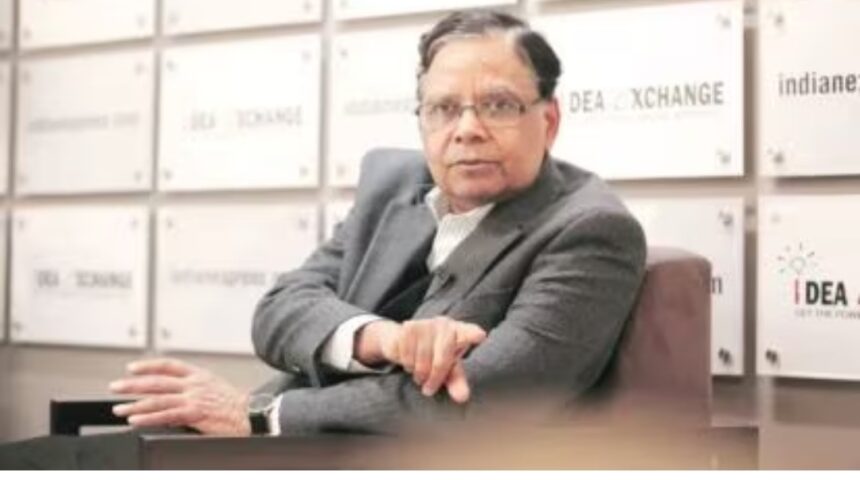India is currently the fifth largest economy in the world after the US, China, Japan and Germany.
Economist Arvind Panagariya said on Friday that there is a good chance that India will become the world’s third-largest economy by the end of 2026, earlier than most current forecasts.
“Over the past two decades, India has grown at an average annual rate of 10.22% in current dollar terms. At this rate, India’s GDP in current dollars will reach $5 trillion by 2026 and $5.5 trillion by 2027,” said Panagariya, former vice-chairman of NITI Aayog and currently a professor of economics. at Columbia University, said.
India is currently the fifth largest economy in the world after the US, China, Japan and Germany. In 2022, the GDP of India, Germany and Japan will be $3.4 trillion, $4.1 trillion and $4.2 trillion, respectively.
He said this was an unusual year for Japan as its GDP plummeted, from $5 trillion in the previous six years to just $4.2 trillion. strong appreciation of the dollar against the Japanese yen. Specifically, the value of the dollar at the end of 2022 is 13.9% higher than at the beginning of the year, Panagariya said at the 18th C. D. Deshmukh Memorial Lecture organized by the RBI.
Regarding Germany, he said the country’s economy is currently facing difficulties, with the IMF forecasting negative growth in real euro terms. However, the country’s current dollar GDP is expected to be supported by high inflation and an appreciation of the euro in 2023. These two factors are expected to increase Germany’s GDP in current dollars just over 8%, to $4,400 billion. However, in the coming years, with inflation likely to decline, GDP in current USD terms will increase by a maximum of 4% per year, he said.
“It is therefore unlikely that the current dollar GDP of Germany or Japan will exceed the $5 trillion mark in the next three years,” he said. “With these estimates, how soon can India’s GDP surpass the GDP of these two countries? One way to answer this question is to assume that over the next four or five years, India will maintain the average growth rate in current dollar terms achieved over the past two decades,” Panagariya said.
Realizing that the first of these decades was rocked by the global financial crisis and the second by the pandemic, many of the reforms that have been implemented in the past decade and the problems facing China aspect has made global investors turn to India as an important destination. . , this is a conservative assumption, he said.
“To realize its full potential, India must take the necessary steps to help its economic units grow. Small houses, small farms and small businesses are intertwined,” Panagariya said. Reforms that help industrial and service enterprises develop will create job opportunities for the masses, which will pave the way for the migration of workers from rural to urban areas, he declared.
He said such migration would automatically increase the amount of agricultural land per worker while bringing more and more population to developing places. “As the population gradually concentrates in urban areas, we will also see larger economic units replacing smaller economic units in areas such as schools and colleges,” he said.
For more information visit at https://happenrecently.com/zepto/?amp=1

